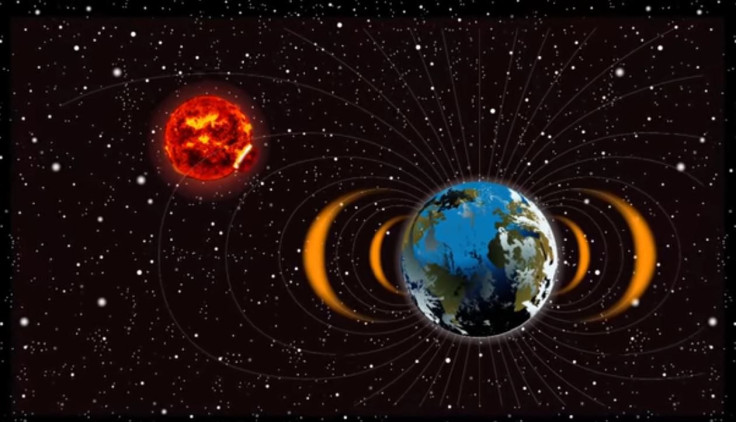Earth’s Space Weather Can Storm From Nuclear Explosions In Planet’s Atmosphere

No matter how small humans are on the great scale of the universe, we can still change it. NASA says we are even powerful enough to affect space weather.
That happened during the Cold War, the space agency’s Goddard Spaceflight Center explained. When the United States and the former Soviet Union tested nuclear weapons with explosions at high altitudes in the late 1950s and early 1960s, they expelled charged particles that interfered with Earth’s magnetic fields in ways we usually see with the material that’s routinely ejected from the sun and blown in our direction. The particles interfered with some satellites and caused auroras in strange places.
Read: How the Sun Changes Earth’s Electricity
Those findings were detailed in a study in the journal Space Science Reviews, which said the explosions “created artificial radiation belts near Earth.”
When the sun blows electrically charged particles toward Earth, they get caught up in the planet’s magnetic fields, creating a geomagnetic storm. That can interfere with radio communications and GPS systems, but the electricity doesn’t just affect satellites; it can also do damage to electrical grids on the surface. One of the more positive side effects is the aurora, the colorful displays of light that come from the electric particles interacting with gases in our atmosphere and dancing along the magnetic field lines. Those auroras, however, typically appear toward the Earth’s poles.
In the case of the nuclear tests, with explosions 16 to 250 miles up, they set off auroras near the equator. The “Teak” test of August 1958 involved an explosion over an island in the Pacific Ocean near Hawaii, which created an artificial aurora over Western Samoa.
“The energetic particles released by the test likely followed Earth’s magnetic field lines to the Polynesian island nation, inducing the aurora,” NASA said. “Observing how the tests caused aurora can provide insight into what the natural auroral mechanisms are too.”
Read: What’s That Strange Streak of Color in the Aurora? Oh, It’s Just Steve
The information stems from decades-old data that was only recently declassified, and with the nuclear testing long ended, space weather in our planet’s neighborhood mostly is affected by natural processes only, but the space agency said it can provide insight into naturally occurring space radiation and help protect both satellites and astronauts.
“If we understand what happened in the somewhat controlled and extreme event that was caused by one of these man-made events,” study co-author Phil Erickson said in the NASA release, “we can more easily understand the natural variation in the near-space environment.”
© Copyright IBTimes 2024. All rights reserved.





















